How To Transform Fingerpicking Patterns Into Incredible Sounding Music
by Simon Candy
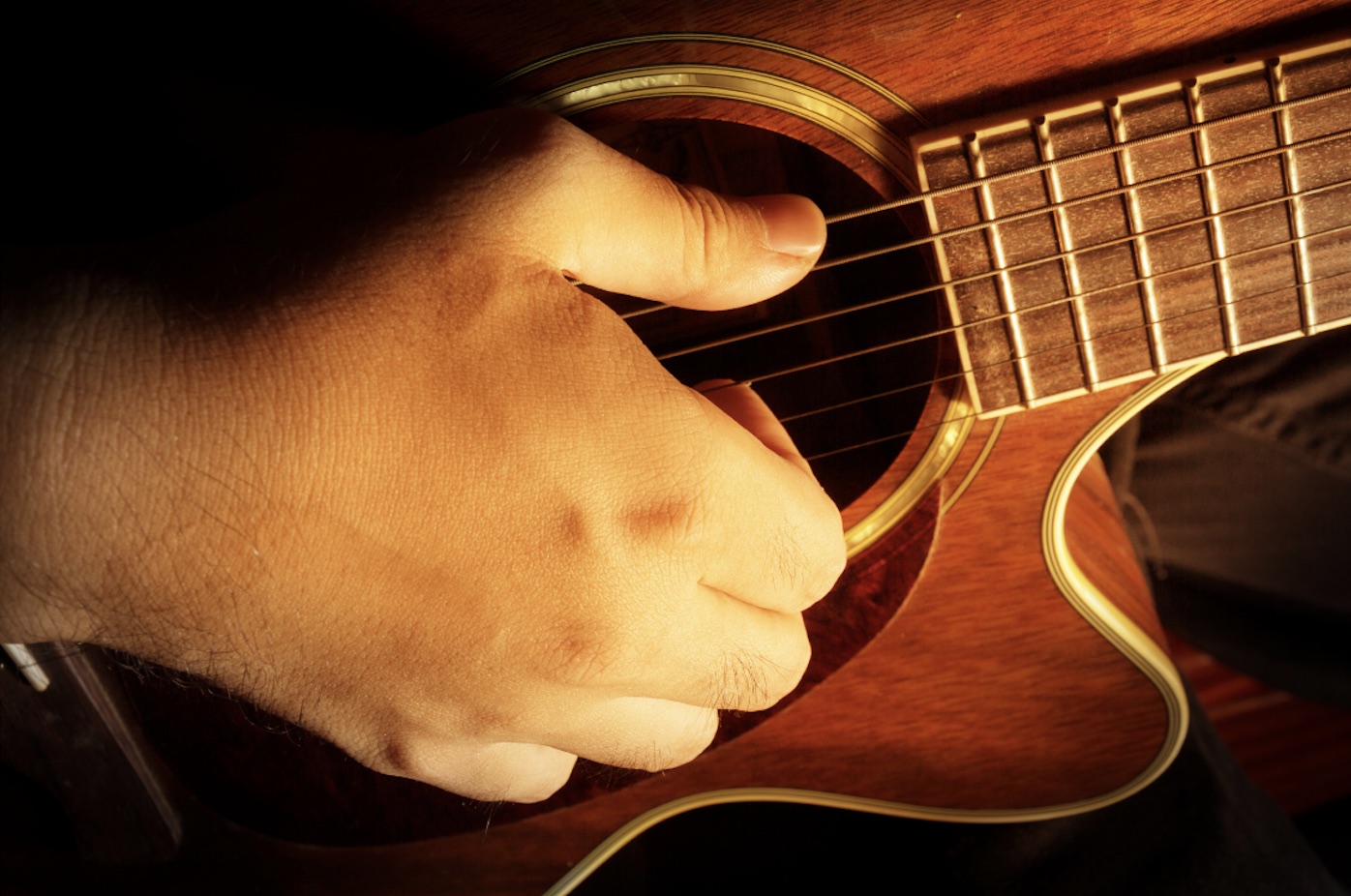 In any area of guitar playing a little technique can go a long way if you know how to apply it creatively.
In any area of guitar playing a little technique can go a long way if you know how to apply it creatively.
In this article, I am going to present to you several commonly used fingerpicking patterns for guitar.
The patterns themselves are not really that important, at least not in the context of this article. What is of utmost importance, however, and the whole focus of this lesson, is the creative application of these fingerpicking patterns (ie. actually to create music). Yes, having a variety of fingerpicking patterns from which to fingerpick your guitar is essential.
However, without the ability to creatively apply fingerpicking techniques and patterns to produce music, it will be futile. In today's lesson, I will show you a single chord progression and several fingerpicking patterns. We will then explore creative ways to apply these patterns to create amazing-sounding music from just a few basic ideas.
Common Fingerpicking Patterns For Guitar
The following are 3 common approaches to fingerpicking guitar. Each on its own will do little for your guitar playing. The key is in the creative application of these patterns which we will be doing very shortly.
• The Travis Picking Pattern
The following is perhaps the most common and useful fingerpicking pattern that you are likely to come across. It is known as the travis picking pattern.
This pattern consists of your thumb playing a steady bass line on the lower 3 strings of the guitar, while your fingers play combinations of the higher 3 strings on and in between these bass notes.
Here is a basic travis picking pattern on the open strings of the guitar:

• The Banjo Roll Pattern
Next, we have a forward banjo roll which is a common pattern for fingerpicking guitar:

These banjo rolls can be incorporated into your guitar playing in various ways, producing amazing sounds.
• The Open String Pattern
This third pattern for fingerpicking your guitar is a little more generic. It doesn’t really have a name commonly associated with it. However you will see shortly how I apply it to create some really cool solo fingerpicking lines involving open strings.
Here it is ascending:

And here it is descending:

Fingerpicking Chord Progression
To demonstrate the versatility of our fingerpicking patterns, I will use the same chord progression for the application of each pattern. This helps emphasise the mileage we can get out of each pattern across a single chord progression.
Here is the chord progression to which we will apply our fingerpicking patterns:
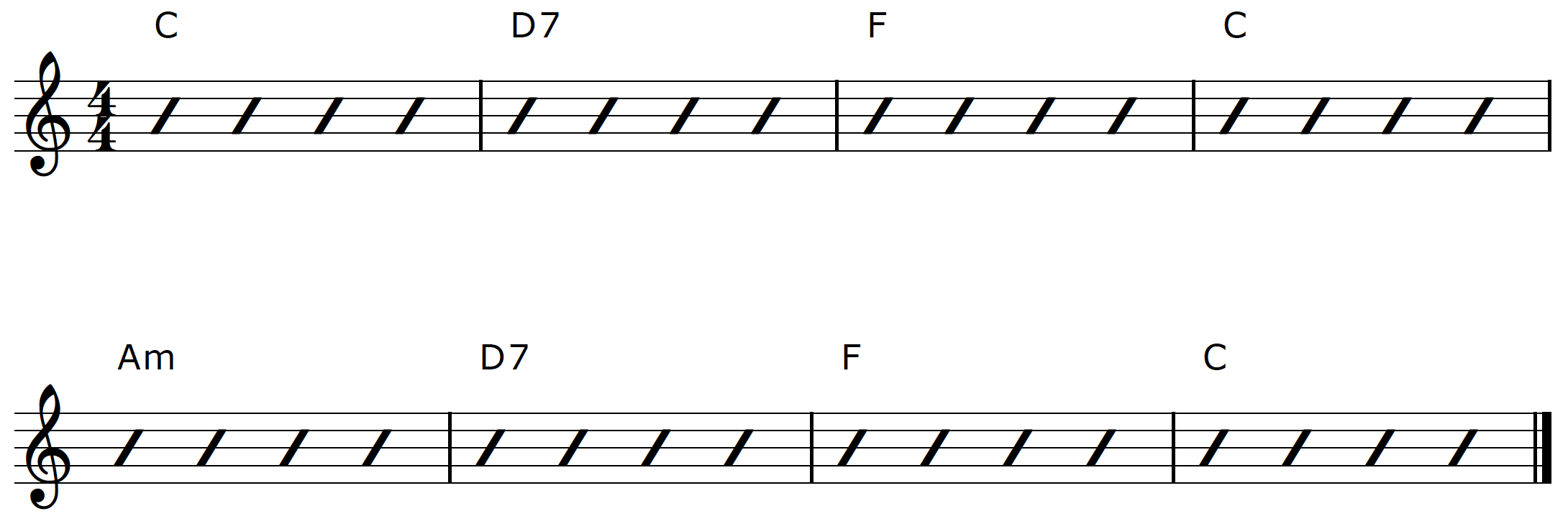
Creative Fingerpicking Application 1: The Travis Picking Pattern
Below is an example of applying the travis picking pattern to our progression:
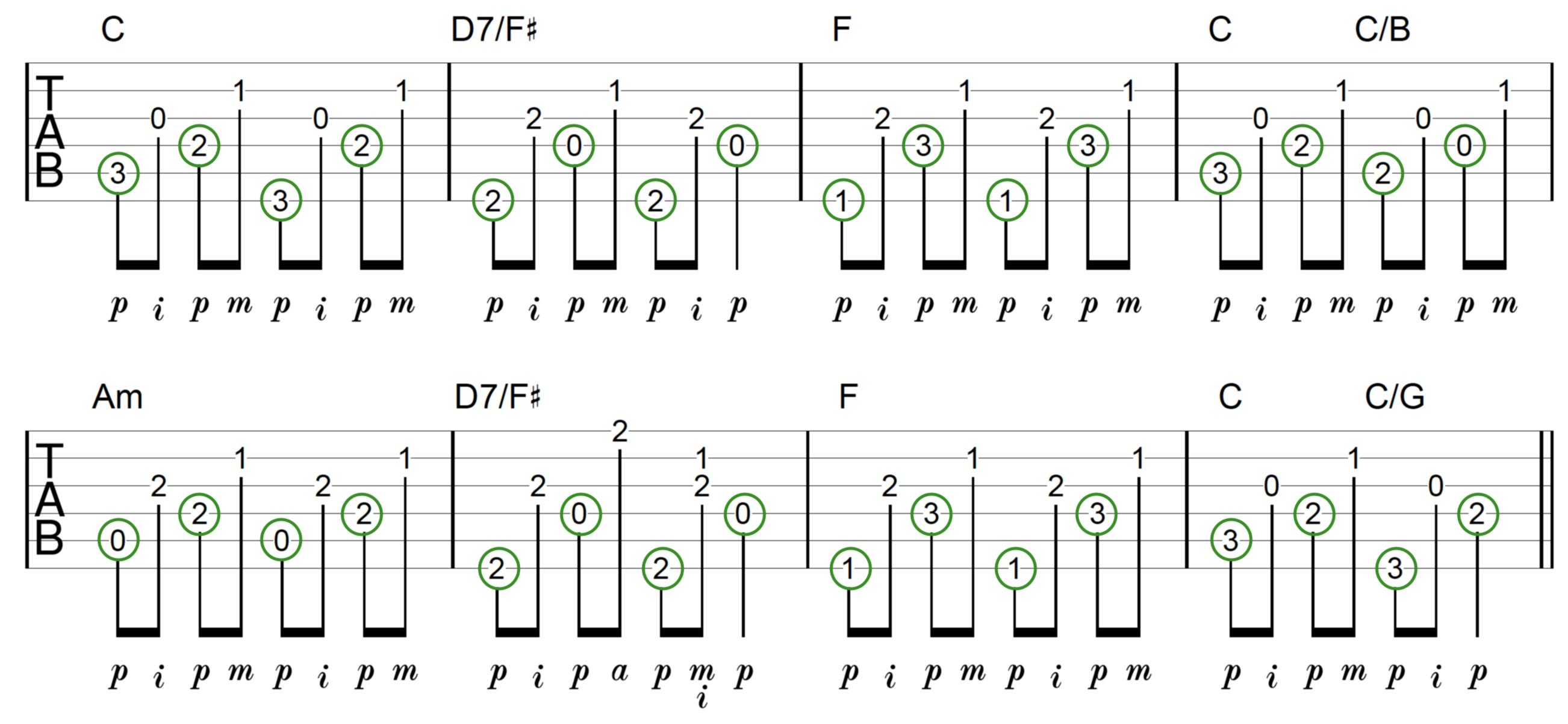
Notice how the bass note of each chord always falls on the beat.
I have highlighted these notes so you can see this more clearly.
The bass is at the foundation of the travis picking pattern.
To learn more about the travis picking pattern check out the video below.
In this lesson, I break the travis picking pattern down into great detail and show you how you can make it part of your guitar playing:
Creative Fingerpicking Application 2: The Banjo Roll Pattern
So how can we apply our banjo roll fingerpicking pattern to this progression?
The answer is many ways.
Here is one example:
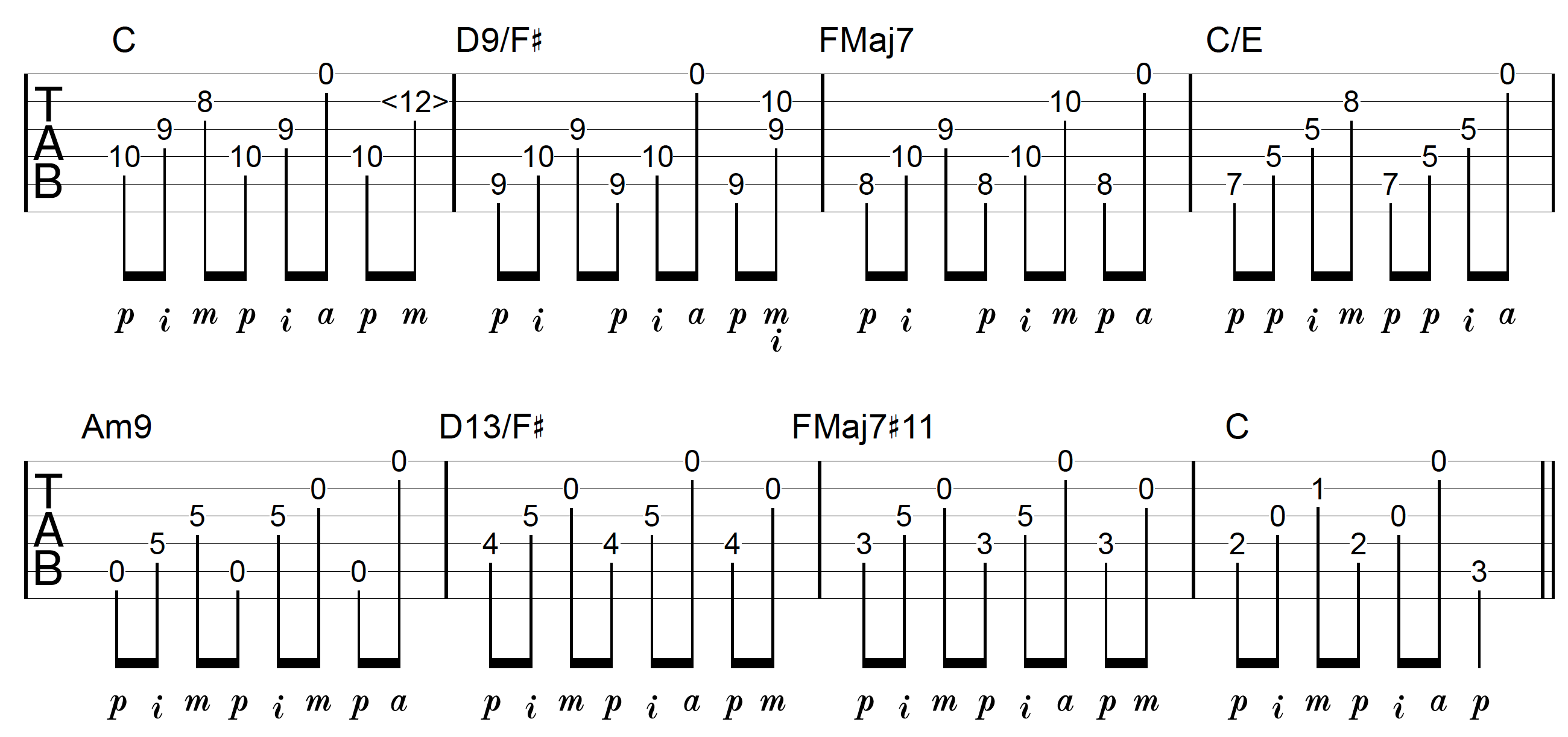
Not only are we applying a different fingerpicking pattern to our progression, but we are also using different chord shapes. Learning multiple ways to play a chord progression on the guitar with various shapes allows for even more creative fingerpicking possibilities.
You will notice I have had to adapt the banjo roll pattern to fit some of the chords I am using.
The lowest note of each chord determines where the pattern starts.
For example, I begin the pattern from the 5th string for the D9/F#, FMaj7, and Am9 chords, as each of these chords starts from this string.
You may also notice I have made minor variations to the banjo roll pattern itself regarding the order of the strings.
The overall sound is quite different to our travis picking approach but sounds just as good.
Checkout the video below to discover how to transform a chord progression using open strings and banjo rolls on guitar:
Creative Fingerpicking Application 3: The Open String Pattern
This third application of our fingerpicking skills is quite different to our first two approaches. For a start we are totally abandoning our chords and instead, creating a very cool open string fingerpicking riff that implies the harmony of our progression.
Check it out:
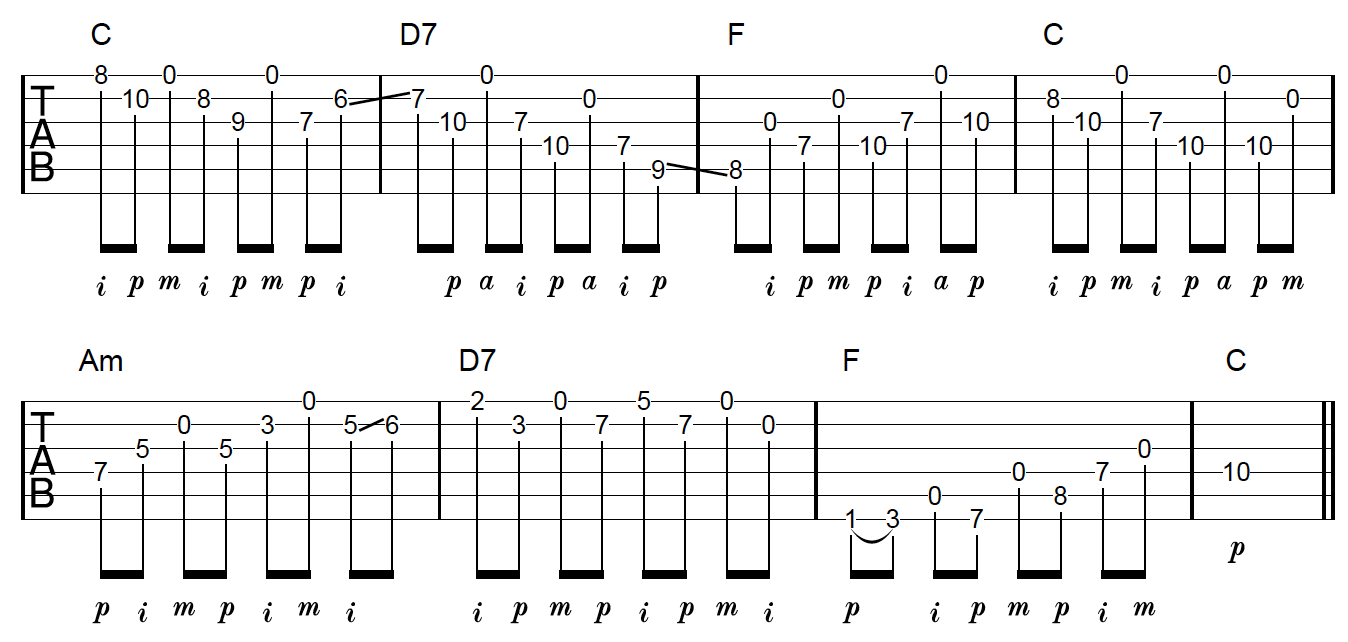
Notice that even though there are no chords played in this example, you can still hear the harmony of the progression. This is because I am targeting the tones of each chord as they occur in the progression. As was the case with our forward banjo roll, I am not exclusively using the ascending and descending open string patterns throughout this example, although they do feature heavily.
For more ways to create unique sounding solo lines using open strings check out the video below.
In this lesson, you learn how to create great sounding solos using open strings and the pentatonic scale:
Combining Approaches Into A Creative Fingerpicking Etude
Let me present to you here a short etude that combines all 3 fingerpicking approaches from above. I think when you hear them all together, back to back, you will hear just how much variety in sound you can bring to a single chord progression with your fingerpicking skills:
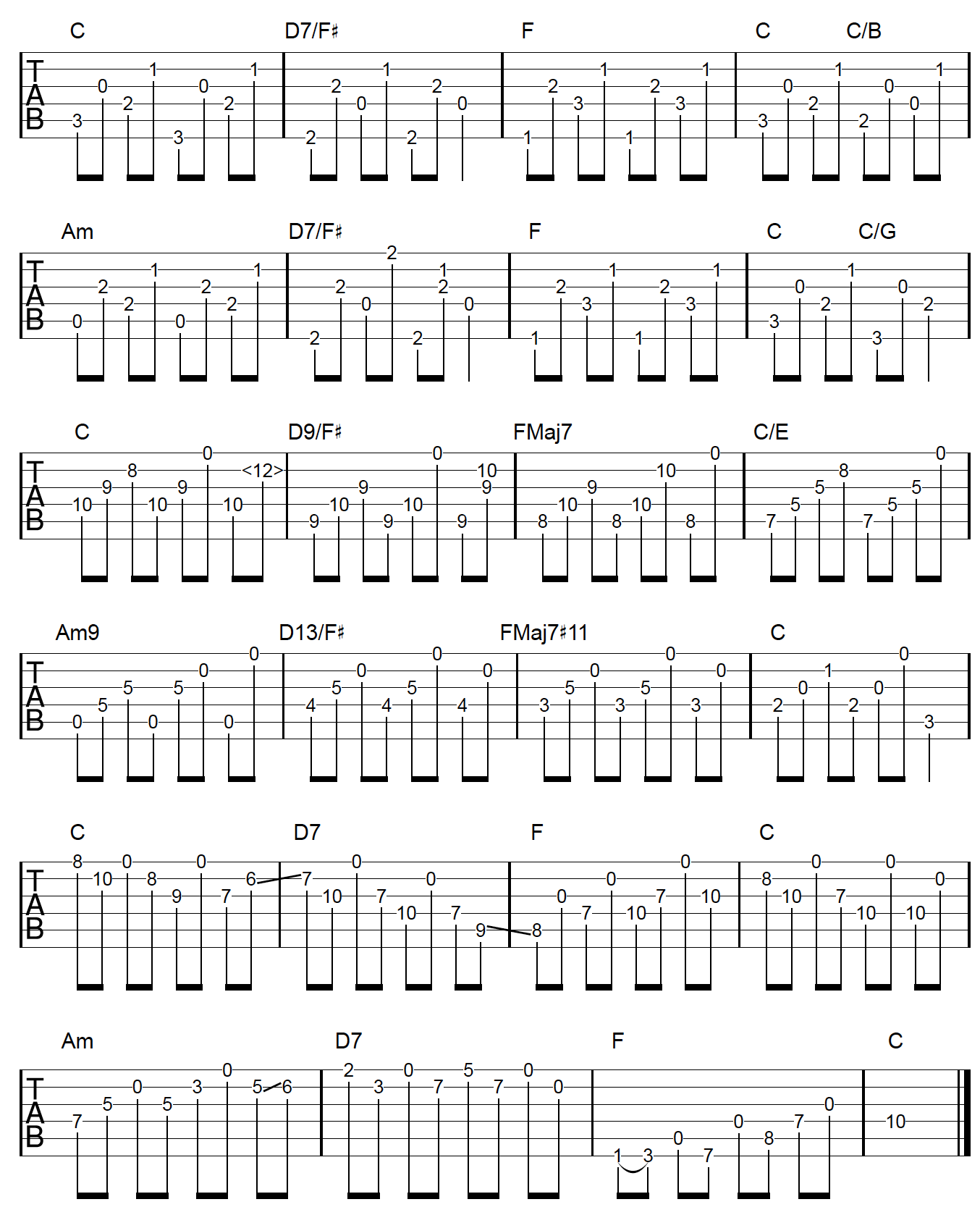
What I want you to see here is the potential of what just a handful of fingerpicking patterns can bring to a single chord progression, and that it’s not how many fingerpicking patterns you know, or how great your technique is, but how well you can apply all this stuff to create actual music!
I also want to emphasize the importance of your fretting hand in showcasing your fingerpicking creativity, including chord variety, harmonization, and melodies.
Learn how to truly master your fingerpicking on guitar once and for all, and gain the freedom to play whatever you want.